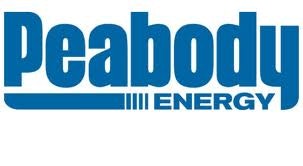Let’s face it: this is a horrible time to be a coal miner! Cheap natural gas has kept domestic U.S. demand in the dumps, and now even exports of U.S. coal are expected to decline by as much as 25% during 2013. Alpha Natural Resources, Inc. (NYSE:ANR) paid $7.1 billion for rival Massey Energy roughly two years ago, and today the combined company retains a market capitalization of just $2 billion! Poof! Cliffs Natural Resources Inc (NYSE:CLF) continues to sell its metallurgical coal at a loss even after some welcome cost improvements, and the shares of major producer Arch Coal Inc (NYSE:ACI) are still reeling from a huge fourth-quarter miss. CONSOL Energy Inc. (NYSE:CNX) seems about the only operator standing on solid ground, but that’s more a natural gas story than it is about coal.

Accordingly, I’ve authored a premium research report that presents my bullish long-term investment thesis for Peabody Energy, and I strongly encourage readers to access the full report from The Motley Fool by clicking here. To get you started, I’m offering a sneak-peak below at one section of the report, where I paint the nature of the opportunity with broad strokes. Please enjoy the following excerpt:
The Opportunity
Oil is about to cede its long-held position as the world’s leading energy source, and the fuel that’s set to take its place may surprise you. According to the energy experts at research firm Wood Mackenzie, coal will overtake oil – sometime during the year 2013 – as the world’s largest energy source. The 1.3 billion tons of fresh global coal demand that’s expected to emerge by 2016 equates to more than five times the entire 2012 sales volume of the world’s largest private sector coal company: Peabody Energy.With an enviable suite of operations that is best positioned to efficiently supply this major growth market, Peabody Energy makes an extremely compelling selection for long-term capital appreciation. But before we dive into the specific strengths that set Peabody apart from its peers, we must first unravel the myths of a misunderstood coal market.
Step 1: Understand the future of coal
U.S. investors may be particularly susceptible to perpetuating a myth of coal’s secular decline. After all, their particular energy sector has undergone rapid structural changes in recent years, dominated by the storied explosion in natural gas production capacity. But there is more to the domestic U.S. coal story than meets the eye, and in any event the astounding scale of looming demand growth from China and India more than suffice to offset the damage.The U.S. coal market will continue to face headwinds, including a projected 20-million-ton decrease in the amount of coal used for electricity generation between 2011 and 2016. But within that relatively modest net decline hides a fascinating tale of vastly differing outlooks between select coal regions (called “basins”). Peabody Energy projects a 50-million-ton increase in coal demand by utilities likely to source coals from the Southern Powder River Basin (abbreviated “SPRB”) and the Illinois Basin (abbreviated “ILB”) combined, compared with a 70-million-ton decrease in utility demand for the nation’s remaining coal basins.
The following chart depicts Peabody Energy’s forecast for forthcoming changes in the contributions from various coal basins to total U.S. coal production over the same five-year period. As you will see, a severe contraction in production from the Central Appalachian Basin may be substantially counteracted by meaningful growth from the SPRB and the ILB. Keep that basin-specific outlook in mind when we discuss Peabody’s U.S. operations below.
Meanwhile, a resiliently bullish long-term outlook for global coal demand stands in stark contrast to weakened domestic demand. Of the aforementioned 1.3 billion tons of new annual demand projected by 2016, some 73% would come from China alone! A strong demographic trend of urbanization in China supports an expectation for increasing per-capita steel consumption, and continued growth of coal-fired electricity generation. India offers a smaller version of a similar story, but with the likelihood of even stronger growth in annual import volumes.
So while many investors appear to have ditched coal equity exposure altogether following an admittedly woeful retreat by the mining stocks since early 2011, a careful review of the industry’s fundamental outlook suggests that well-positioned coal miners stand to profit handsomely from coal’s bullish emergence as the world’s leading energy source. The following chart paints a powerful picture, revealing coal as not merely the emerging leader of the energy patch, but also as the fastest-growing component of global energy demand! With the myth of coal’s secular decline now laid to rest, we’re ready to discuss why Peabody Energy is in the best position among the miners of coal to profit from this powerful trend.
Peabody’s pole position
Simply stated, no other coal miner comes close to matching Peabody’s prime strategic position. Recalling the outlook for growing production from the ILB and SPRB – even as Central Appalachian coals continue to lose market share – consider Peabody’s utter dominance in both of those more favorable coal basins. In Wyoming’s SPRB, the miner recently added 1.1 billion tons in new coal leases adjacent to its flagship North Antelope Rochelle mine, bringing total reserves in the region to 4-billion tons. At Peabody’s present production rate of about 140-million tons per year from the SPRB – accounting for roughly 74% of the company’s entire U.S. mine production – those world-class reserves correspond to a very substantial 29 years of mine life.In the Midwest, Peabody’s ILB operations enjoy healthy gross margins for another 30-million tons of annual production from the nation’s fastest-growing coal basin. And here again, Peabody Energy is the hands-down market leader with low-cost operations like the 8-million-ton Bear Run mine (which enjoys a long-term off-take agreement with regional utilities).
While those peer-leading operating footprints within the two most favorable U.S. coal basins offer a glimpse of Peabody’s looming profit potential, the company’s phenomenal portfolio of Australian assets ready to supply the coal-hungry Pacific seaborne markets are central to Peabody’s bullish long-term outlook. Particularly as the company continues to integrate (and achieve synergies from) the assets acquired through its landmark $5.2 billion acquisition of Macarthur Coal in 2011, Peabody has the ingredients in place to generate substantial shareholder value by combining three-year production growth of about 25% (to 40-million tons by 2015) with exceptional profit margins and coveted export infrastructure. Peabody has also made the fortuitous discovery that the exploration assets acquired with Macarthur are “more robust than originally expected,” which sets the stage for efficient, organic value generation at the tip of the exploration drill.
The article A Timely Opportunity in Peabody Energy originally appeared on Fool.com and is written by Christopher Barker.
Fool contributor Christopher Barker owns shares of Peabody Energy. The Motley Fool has no position in any of the stocks mentioned.
Copyright © 1995 – 2013 The Motley Fool, LLC. All rights reserved. The Motley Fool has a disclosure policy.






